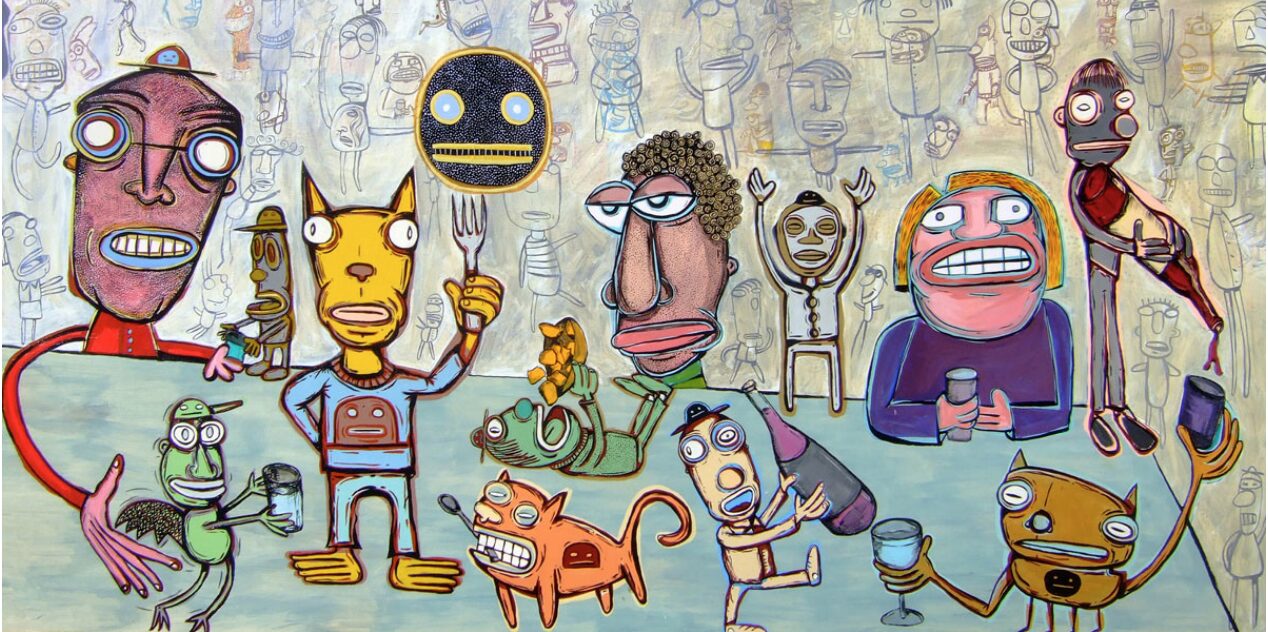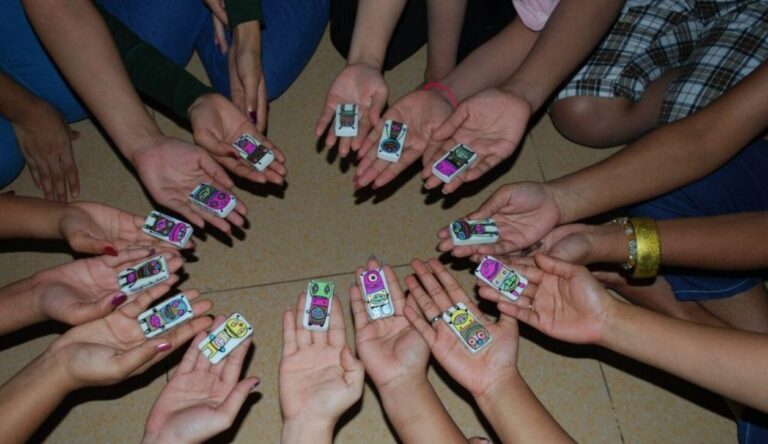Commitment is engaging.
I learned this as a beginning improviser almost twenty years ago with an exercise called “The Exit Game”. I was introduced to this experience by Keith Johnstone. Keith is a master/guru/lovely human who unlocked the power of the art form for me.
For “The Exit Game” he had us play the role of an audience. This was in Calgary (an improv hotbed, who knew?) and there were about 15 of us in the summer intensive.
Keith gave us the following instructions, “All audiences have a fragile thread of attention that can snap at any moment, but they are very polite, so you as performers rarely see the thread snap when they lose interest and long for the exit. Instead they sit there with neutral looks on their faces, but wishing that it would be over.”
The point of the exercise was to make this internal dialogue visible, asking us as the audience to stand up and leave as soon as our thread of attention had snapped. We would have to explain why we left, but we could leave for any reason. Keith continued, “One at a time each of you will come up on stage as a solo performer and try to keep the audience engaged. You can do or say anything that you think will keep the audience in their seats. Oh, and we will be timing each of you. Once half of the audience has left we will call time. By the way, a minute represents a really good time.”
Before I could ponder this further, we were underway. Some tactics were expected, and others surprising. One performer started to slowly take their clothes off, and by the second shirt button the audience got up in unison and left. When asked why, some laughingly said that they really didn’t want to see Joseph naked. But most said they didn’t believe he would do it. It seemed like a joke. He wasn’t committed to getting naked.
Others told true stories about themselves and family members. These were more successful. I remember one performer talking about the death of her grandmother. The audience lasted forty-five seconds, which might seem harsh, but when asked they said that she seemed like she was finished with the story, so they left. Others tried to teach us something like how to change a bike tire. They lasted fifteen seconds.
The performers were slowly getting up on stage and I realized that it would soon only me left. My plan was to wait and see what was most successful and do more of that. But before I could strategize further everyone was looking at me and I felt my body stand up and slowly move towards the stage without any idea of what I was going to do.
Almost as if my brain was rescuing me at the last moment, I noticed an empty glass Coke bottle that a student had finished and left next to his seat in the front row. Without really knowing what I was doing, I reached down and picked up the bottle getting really, really interested in it. I locked my eyes on it, lifting my hand with the bottle a bit closer to my face and stepped on to stage, never breaking eye contact with it. My feet moved to the back of the stage as I got even more interested in the shape, weight, texture of the bottle. By now twenty seconds had passed and nobody had budged from the seats.
Still fixated on every aspect of the bottle, I knelt down, turned it sideways and in slow motion brought the bottle down to the floor (forty seconds). I don’t remember thinking about, or planning what I was doing, all I knew was that being genuinely interested in this bottle was my life line. I gently placed it length wise on the stage and with a push sent it rolling forward from the back of the stage towards the front where, if it were to continue, it would roll off the front and crash to floor (one minute).
I kept watching the rolling bottle, noticing its tumble, sound, blur of font as it rotated. And then something happened that broke my focus and ended the game:
I started worrying about myself.
I noticed that at the speed (slow) of the roll, the bottle was going to fall short of its goal. The tumble was slowing down and the bottle was not going over the edge. My eyes wavered and my internal dialogue switched from being focused on the bottle to worrying about my performance. I glanced up at my audience, a microsecond of doubt. But that is all it took, and in that moment, with the bottle slowly rolling forward, the audience (all of them) stood up and walked out (One minute and twenty four seconds).
I did have the winning time (whooo hoo!!) But more importantly (really) was what the audience said when they returned. When asked why they left, many ignored the question and first talked about why they stayed to watch someone watch a Coke bottle. “You seemed really interested in the Coke bottle. I wanted to know why.” “There was a promise of something special because of how committed you were to what you were doing.” “It didn’t seem like you wanted/needed something from us as an audience. You were just focused on something and invited us to be part of it.”
When pressed to describe why they left I heard, “The moment you stopped believing in what you where doing I stopped believing in you.” “There was a moment when you shifted from the bottle to worrying what we thought of you.”
This exercise happened a long time ago, but has had a profound impact on how I work with and think about audiences. First, from that moment I became really interested in audiences. I would go to concerts, and shows and spend my time (and ticket money) turning around, watching the audience as they watched the show. Seeing how they moved, interacted, and behaved, often as one.
Like “The Exit Game”, we all have an audience. There are traditional audiences that sit in seats in rows (or tables). There are audiences of one, where you are simply chatting with another person. Here are some of the things I have learned about audiences:
- They have an attention span of an energized four year old (granted a giant, loud four year old).
- They want you to succeed. Not because they are altruistic, far from it. It is in their best interest that you “do well”, because you are on their clock. It’s their time and they want it to be well spent.
- They behave like a single organism. They laugh, groan and even inhale and exhale in unison.
- They have a varied degree of tolerance for “dot connecting”. Some want you to spell everything out in terms of application. Some are happy to do the dot connecting for themselves and actually learn that way.
- They don’t want a one-way spigot of information blasted at them. They want to grapple with information and crave a two-way flow of dialogue.
- They want you to be as relaxed and confortable as possible. Why? Same as the second bullet, but also because audiences are a giant ball of empathy. If you are nervous, they are nervous. If you are enjoying yourself, they are too.
But mostly audiences want you to be interested. So when you think about your next presentation, get interested, don’t try to be interesting.
Gary Hirsch is the co-founder of On Your Feet a consultancy that uses improv to help organizations create, communicate, and collaborate. He is also the founder of Botjoy, a visual experiment in co-creation. Read more from Gary on the On Your Feet blog. You can reach Gary at gary@oyf.com



